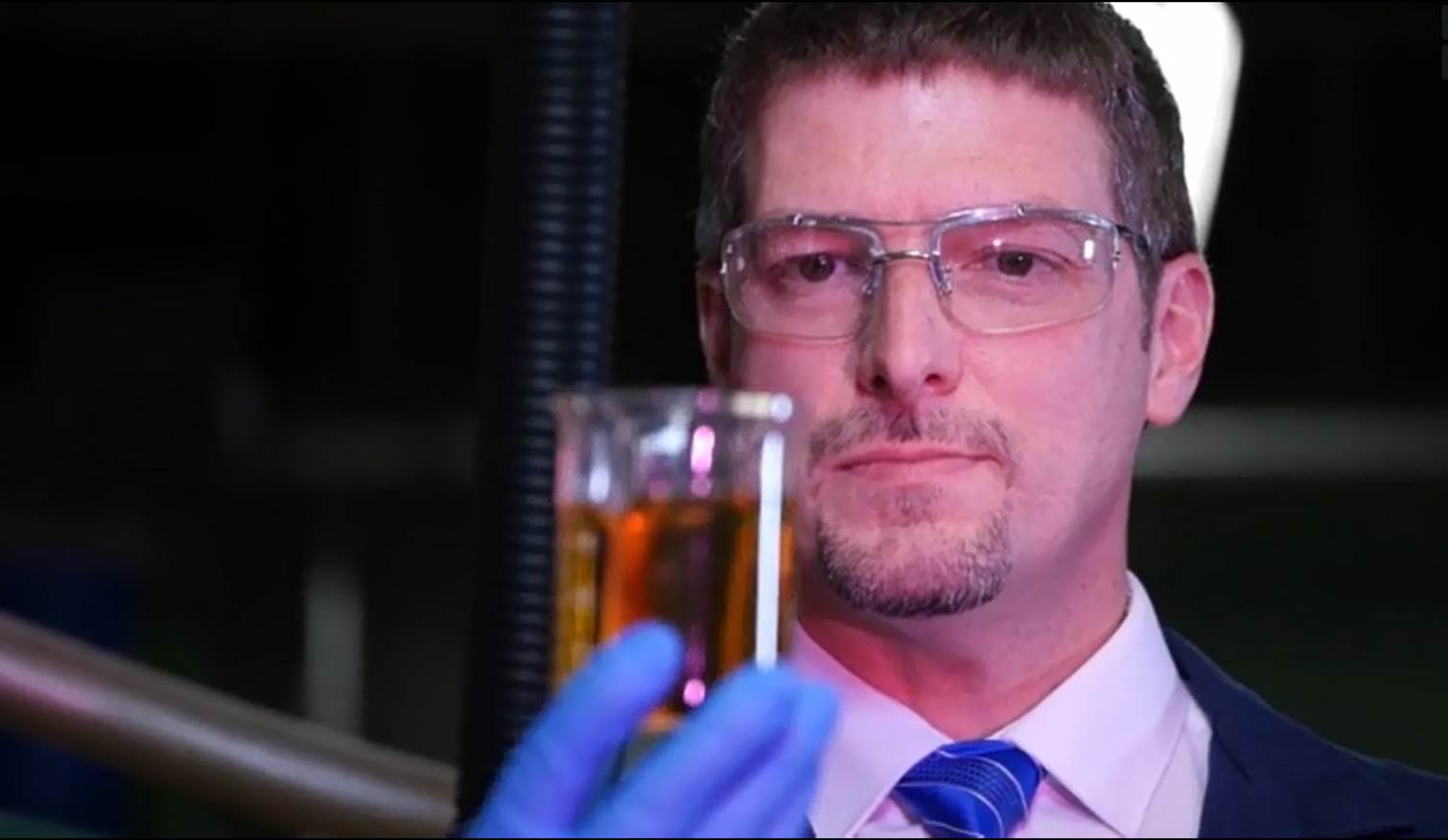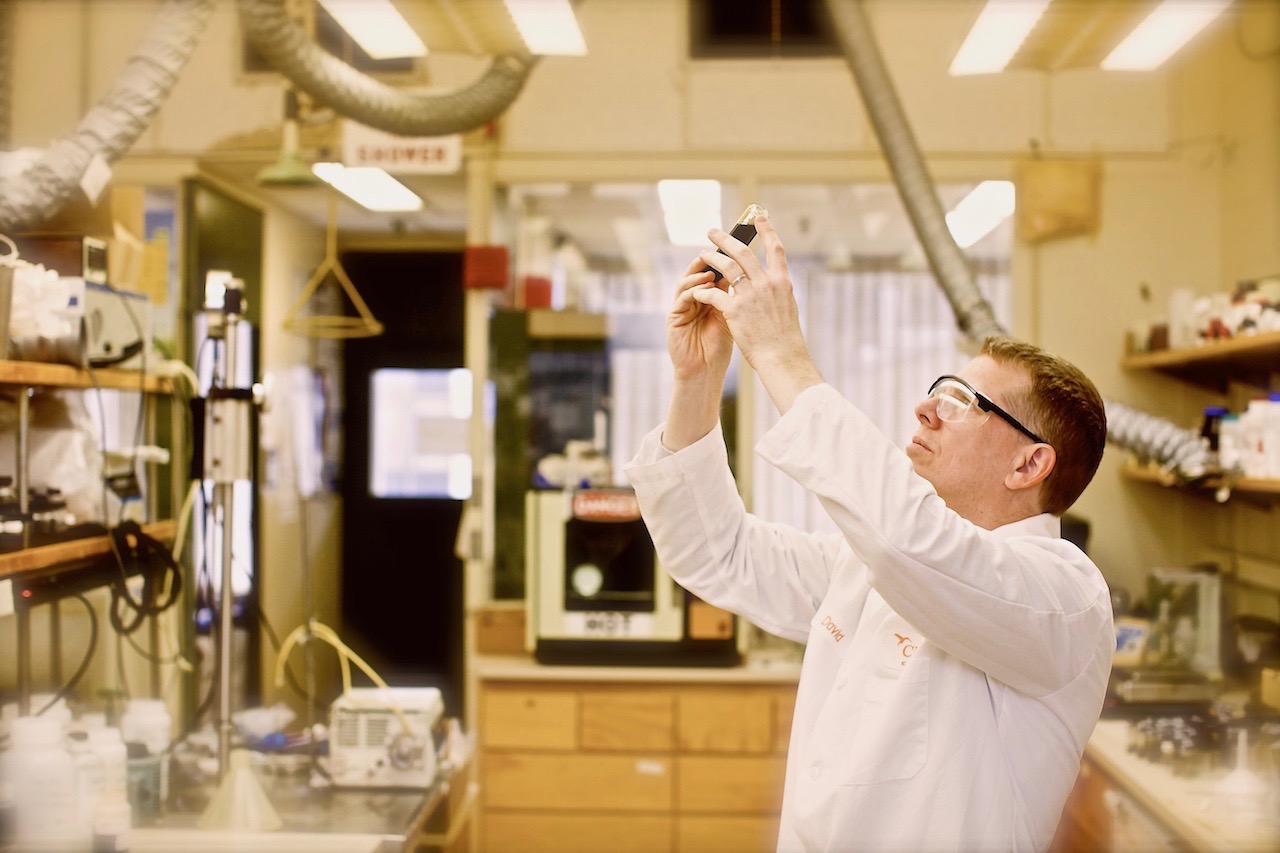Materials Science
Nanomaterial manufacturing consistency starts in research 20th November 2017
By Doug Singer, Executive Vice President of Cerion Advanced Materials
Doug Singer, Executive Vice President of Cerion Advanced Materials, explains how to reduce product variability in full-scale

Doug Singer, Executive Vice President of Cerion Advanced Materials, explains how to reduce product variability in full-scale manufacturing. Using specialty nanomaterial manufacturing as an example, his sugggestions are broadly applicable to many in the specialty chemicals industry.
Within the chemicals manufacturing industry, many systems or tactics exist for finding the source of production variability and identifying changes that could reduce it. But the harsh reality is that, all-to-often, the legacy system at the plant is an intertwined ecosystem of moderately-capable equipment, custom-specified unique raw materials, product formulations that are hypersensitive to processing conditions, and possibly government-regulated compliance requirements. The financial and operational impacts of the proposed solutions are crippling, and implementation is limited to what can be pulled off with only 20% of that budget and shutdown time. Too many companies have been painted into this corner by product/process design decisions made years ago.
Fortunately, the world of specialty nanomaterial full scale manufacturing is practically brand new by comparison. Inside many of these companies that have an end goal of commercial production, the ‘plants’ and product formulations are still conceptual in R&D, or possibly have made it to pilot scale. Many more degrees of freedom exist because everything’s new. Now is the time to co-design products and manufacturing systems to build in robustness so companies don’t wind up pulling together that batch to batch defect-reduction team three years down the road. And since many nano-companies that can take advantage of smart co-design now are early- or mid-stage, three years of unreliable production may not be tolerated and it’s too costly to not get it right.
Another challenge for specialty nanomaterial manufacturers is that due to the highly inventive and proprietary nature of this business, there may not be anyone outside the company who understands what’s critical for making in-spec product consistently. The outside knowledge base and engineering consultant system for robust plant and product design is much more established for the bulk and commodity chemical manufacturing sector. For the time being each nanomaterial company may need to develop this methodology inside its own shop.
So what are the key points to nip production variability in the bud?
- Drag the Researchers to the plant.
- Drag the Engineers/Operators to the lab.
- Break the product formula.
- Break the plant.
- Fail Fast!
Drag the Researchers to the plant
The research team needs to understand how the commercial operation does, or will, work. When faced with the challenge of creating a new product for a customer, a material scientist can unleash his or her inventiveness in all kinds of directions. Maybe their most innovative idea is processed at 30 megapascals, can’t tolerate parts per billion contamination levels, and requires equipment not available in the commercial marketplace. The real (affordable) world is made of components and processes which are as industrially standard and available as possible.
The research team needs to understand how the commercial operation does, or will, work. When faced with the challenge of creating a new product for a customer, a material scientist can unleash his or her inventiveness in all kinds of directions. Maybe their most innovative idea is processed at 30 megapascals, can’t tolerate parts per billion contamination levels, and requires equipment not available in the commercial marketplace. The real (affordable) world is made of components and processes which are as industrially standard and available as possible.
By having the researcher familiar with the current or realistic future capabilities of the plant, the researcher will be able to automatically self-prioritize paths of investigation to first try synthesis methods that have the best chance of working at full scale. Only if those options don’t meet the product requirements does it move up the ladder of complexity and robustness risk. The payback of this approach to invention is ten-fold. It pre-emptively short-circuits entire loops through the commercialization and scale-up process which would otherwise end in expensive and time-to-market-extending manufacturing variability failures.

Drag the Engineers/Operators to the lab
Tech transfer needs to go both ways to have the best chance of producing consistent product batches in the plant. Having plant engineers and operators see the lab batches being made allows them to mentally overlay the equivalent manufacturing process onto each step in the lab batch. From this, engineers can identify first hand where new process capabilities need to be created at the plant to control critical sources of variability.
Tech transfer needs to go both ways to have the best chance of producing consistent product batches in the plant. Having plant engineers and operators see the lab batches being made allows them to mentally overlay the equivalent manufacturing process onto each step in the lab batch. From this, engineers can identify first hand where new process capabilities need to be created at the plant to control critical sources of variability.
It’s also an opportunity to ask researchers, “Why did you do that step that particular way?” If the answer is, “It doesn’t have to be that way,” and highly-capable equipment is already available which accomplishes the same function in a better way, this is the time to design new or extra steps right out of the process.
Break the product formula
The materials scientist has successfully created a candidate product formulation which meets the customer’s particle size, morphology, and reactivity needs and generally uses a reasonable process for producing it.
The materials scientist has successfully created a candidate product formulation which meets the customer’s particle size, morphology, and reactivity needs and generally uses a reasonable process for producing it.
Congratulations. Now try to screw it up!
Researchers have built-in knowledge when lab experiments are run, and unconsciously monitor and tweak the synthesis process on each 50g batch to ensure success. The odds of that kind of subtle shepherding being done on each batch on the manufacturing floor during third shift is approximately 0.00%. Once the researcher appears to have created a product with the required performance, the formula should be written up and processed with all the instructions and parameters the researcher ostensibly believes are needed. Then it should be handed to another researcher to run – or better yet to a technician or plant operator to run on development equipment which at least somewhat models the manufacturing environment. Every time during the product re-creation process the technician has to stop a batch to ask a question because knowledge is missing, and every time a batch turns out bad because a critical tweak wasn’t made, more and more of what is truly required to produce in-spec product will be uncovered.
Making twenty bad batches on the development equipment and finding twenty subtle critical process parameters that need to be controlled is cheap. Doing it on twenty random commercial batches in the plant over the course of the first year? Not so cheap.
Break the plant
Now that plant engineers are familiar with the proposed product formulation and manufacturing process, a batch needs to be run through – mentally, using process modeling software, or even cardboard cutouts and string if that works.
Now that plant engineers are familiar with the proposed product formulation and manufacturing process, a batch needs to be run through – mentally, using process modeling software, or even cardboard cutouts and string if that works.
Using process engineering experience, ask what would happen if each component of a combined system didn’t perform as expected due to wear, incorrect set-up, or outside influences. What if the reactor coolant loop drops from rated capacity in the summertime and saturates the temperature controller, which throws off the time-integrated temperature factor in the Nernst equation that governs the quality and yield of the synthesis chemistry in each batch? (Nobody thought to test that in the lab because the coolant system happens to be ten times larger than necessary to control the little bench-top reactor and it never works harder than 16% output.)
Even with a great research team, if no one is told what the likely, and even non-obvious, variability sources are, the right experiments cannot be run to determine what happens to product quality when those sources vary in the plant. The engineering team needs to model and feedback these issues as soon as each new candidate formulation/process is available.
Fail Fast
Scaling up an invariant high-tech nanomaterial in the first design iteration will fail, so at least fail early and often, when it’s cheap and correctable.
Scaling up an invariant high-tech nanomaterial in the first design iteration will fail, so at least fail early and often, when it’s cheap and correctable.
From the very beginning, every person needs to walk into a colleague’s office/lab as soon as something is learned and say, “This is going to be a problem for product robustness, so what can we do right now to fix that?”
Very few people will resist change if work has proceeded only a short distance down an idea path when it is discovered that a course correction is required. But if the feedback and correction loop is too long to point out flaws in the product or process early, momentum could shove a non-robust product into the plant because “it’s too late to change anything now.” If a business model depends on manufacturing revenue, letting a non-manufacturable product slide through could result in a serious failure far too late in the game.
Everything discussed here is applicable to just about any industry. However, many rising companies are trying to leverage the unique performance possibilities of specialty nanomaterials into new sustainable commercial businesses where the burden of legacy systems and culture are not present. With that blank slate available, novel approaches can be used to improve the chances that the manufacturing variability-reduction team will not be necessary at the same time an innovative new product is introduced.
Author:
Doug Singer, Executive Vice President of Cerion Advanced Materials, One Blossom Road, Rochester, NY 14610, USA
T: +1 585 271 5630; www.cerionadvancedmaterials.com
T: +1 585 271 5630; www.cerionadvancedmaterials.com



